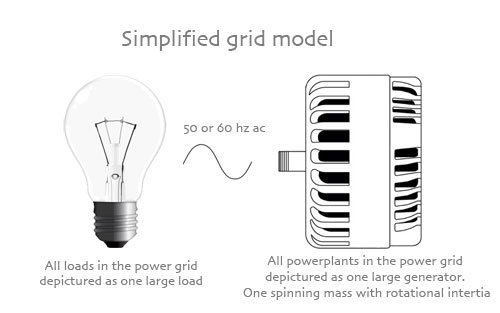| Green Power Consumption. |
|
Taking good care of our environment by cutting down on power consumption is something everybody can agree on is a necessity in order save Mother Earth. However most of us do little to actually cut down on our power consumption. We are too comfortable with our high-power-consumtion way of living. What if we could keep on spending the amount of electricity we do today and still save Mother Earth? Would that not be great? What if we became so good at utilizing alternative energy sources so that we could keep up our way of life? It sounds as an Utopia, and for the time being it is. The big problem with alternative energy sources is their reliability. Wind power is only available when the wind blows. Solar power is only available on a sunny day. Storing energy for a cloudy day involves energy conversion which equals losses, and should we build facilities big enough to accomodate the big energy grid they would be enormous. What we need is to come up with some clever way to user power when it is actually available. There is no need to tickle-charge our laptops and cell phones, or to run the compressor in our fridges when the grid is under heavy load. Nor do we need to start our washing machines during high-load periods. But unplugging adaptors, and delaying the start of our washing machines during high-load periods should not be a manual task. First, how should we know when to do so, and second how should we manage to race around our homes unplugging devices all the time. This calls for automation. This sounds quite tricky! How can one build up an intelligent grid that can use power when it is available in the grid and throttle down when a cloud blocks the sun? It may sound like a daunting task but in fact all the information to build such intelligent devices is already available on the grid today. All we need is for the appliance manufacturer and consumers to embrace the idea! Let me explain.  click to enlarge... Imagine all power generating devices being:
All power consumption devices can be seen as one large load. One large brake that tries to stop the spinning mass. A fine balance between generation and load is maintained. As our grid dependant on location is either 50 or 60 hz ac, this balance can be monitored directly from the ac frequency. When more power is used than what is generated, the big combined spinning mass of all the power generating devices will be slown down. The result is that the net frequency in your wall socket will drop by a minute amount. Today this is monitored on the traditional powerplants, as they are the power production facilities that can respond fastest to such changes. The response is to burn more coal, natural gas, nuclear fuel and to further pollute Mother Earth. If you measure the ac frequency in your wall socket to be 49.9 hz where it shoud be 50.0 hz it means that the grid is under extremely heavy load. That in fact is close to the limit where you can expect a blackout to occur. Often a blackout is the result of a much needed reduction in the grid load to maintain the frequency. By implementing a simple monitoring circuit in suitable devices as mentioned above, it is possible to monitor the net frequency and help the power generating facilities to balance the power consumption to meet the production. The result is that the coal, natural gas and nuclear plants does not have to increase the fuel consumption when the wind suddenly stops to blow or a could pass by the solar plants.Instead it is the power consuming devices that meet the production. A prototype of such a monitoring system has been designed, built, tested and shown good results. The prototype is based on an Olimex LPC-2478-STK development board and runs on an ARM7 processor. The prototype use a color touch screen as user interface and the grid status can be monitored on an embedded webserver based on the micro IP protocol. This of course is very much overkill for the task at hand but that is what happens when a nerd gets his hands on a nice development board. The monitoring and control job can and should when commercially applied be performed by the smallest of microcontrollers to minimize the power consumption of the control circuit itself. What good is it to implement such a system if the control task consumes more power than what is saved by by shutting devices down?  click to enlarge... The graphical user interface of the system can be seen on the picture below. Being the kind of nerd that absolutely dig oldskool and obsolete russian technology I simply had to give the userinterface that special look.  click to enlarge... The monitoring system is very sensitive. I have been able to verify deviations down to 0.05% on the grid frequency, and the system is running completely stable, turning off the light bulb you can see on the picture of the analog board in response to indications of high load on the grid. Would you like to know more details about this project, then I have a very detailed report describing the system and the software made by me and two friends. You can access the report in PDF format here: Download Besides describing the idea of green energy consumption in more details, the report also describes how you control a resistive touch screen, how you interface to a color LCD, and how you implement the micro IP protocol. I hope you will pick up some small tips inthere for yourself. August, 2010. Written by David |